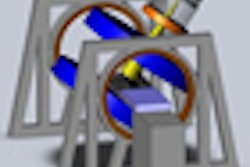Monday, November 26 | 11:40 a.m.-11:50 a.m. | SSC10-08 | Room E450B
U.S. football players are prone to some serious injuries, including athletic pubalgia -- commonly known as sports hernia -- which can obviously hinder their productivity. Researchers from Thomas Jefferson University Hospitals believe MRI can help.With MRI, reproducible patterns of injury in football players can be identified, and these patterns can be used in developing appropriate training to help prevent such injuries from recurring, according to the group.
The retrospective study reviewed MRI results for 70 male football players (average age, 22.3 years) who had clinical athletic pubalgia. Participants also completed a questionnaire, indicating their level of play, side of injury, and previous surgical history.
The MR images were evaluated to determine the number of unilateral aponeurotic, bilateral aponeurotic, and midline pubic plate injuries. The severity of injury to the area was graded as mild, moderate, or severe.
"MRI has been established as the imaging standard for athletic pubalgia lesions and core injury, as it is exceptionally sensitive in the detection and characterization of these injuries," said lead study author Dr. Arvin Kheterpal, chief resident in the department of radiology.
The researchers found that 29 subjects sustained midline pubic plate injuries, 31 had unilateral aponeurotic injuries, and six had bilateral aponeurotic injuries. Osteitis pubis (or inflammation of the pubis) was reported in 58 subjects, with 32 rated as moderate.
"To date, specific lesions and injury patterns identified on MRI have not been correlated with specific athletic activities," Kheterpal said. "An improved understanding of potential injury can lead to enriched training and physical therapy regimens and, hopefully, improved performance with fewer core injuries overall."
Kheterpal and colleagues plan to continue their research in this area. As he put it, this presentation is "only the tip of the iceberg."
"We have interrogated core injuries sustained by athletes in only a single sport: American football," he said. "Anecdotally, however, we have also observed reproducible but distinct injury patterns in baseball hitters and pitchers, hockey goalies and defensemen, soccer forwards, lacrosse attackmen, and distance runners and sprinters, among others. Review of each of these activities with their correlative injuries at MRI may revolutionize training methods as we know them."



.fFmgij6Hin.png?auto=compress%2Cformat&fit=crop&h=100&q=70&w=100)




.fFmgij6Hin.png?auto=compress%2Cformat&fit=crop&h=167&q=70&w=250)











